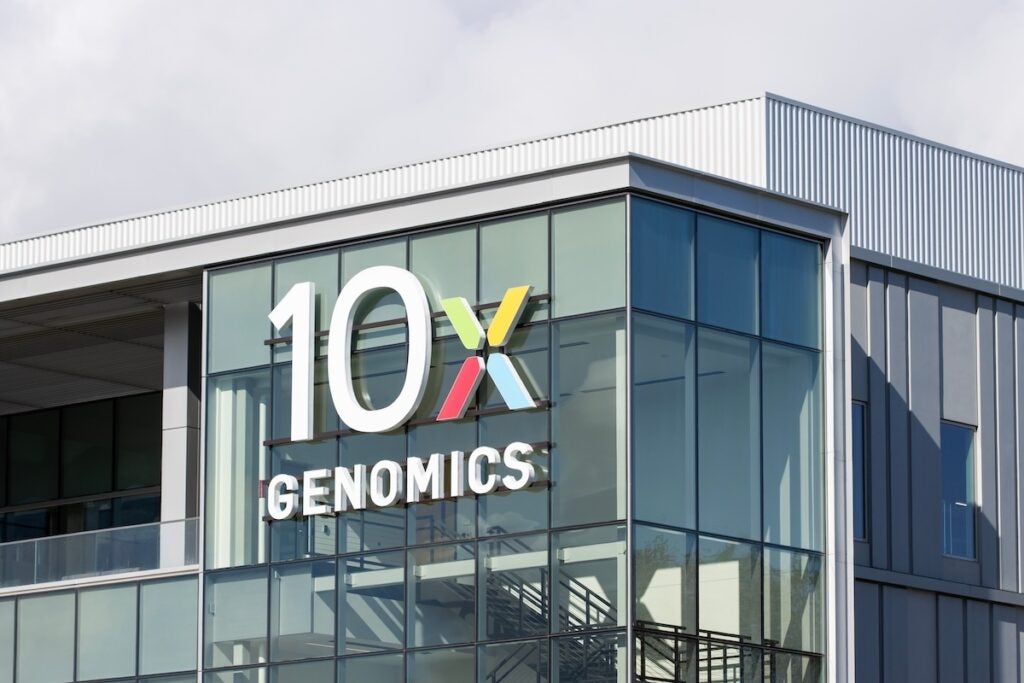The Crucial Role of NIH in 10x Genomics’ Future Growth
In a revealing statement this week, 10x Genomics CEO Serge Saxonov identified the National Institutes of Health (NIH) as a fundamental driver of biomedical innovation, disclosing that 40-50% of the company’s revenue stems from academic and government research funding. The announcement coincided with 10x Genomics’ revised 2023 revenue projections, spotlighting the critical interdependence between biotech firms and federal research investment.
Federal Funding as a Growth Engine for Biotech
The Pleasanton-based single-cell analysis company reported $156 million in Q2 2023 revenue, with Saxonov emphasizing how NIH grants enable researchers to adopt cutting-edge genomic technologies. “Without NIH support, our academic customers simply couldn’t afford these tools,” Saxonov noted during the earnings call. “Every dollar invested in basic research creates downstream commercial opportunities we measure in multiples.”
Industry analysts confirm this multiplier effect:
- NIH allocated $45 billion to medical research in 2022
- 10x Genomics instruments cost $50,000-$150,000, with consumables generating recurring revenue
- Academic labs account for 62% of spatial genomics publications using 10x platforms
The Innovation Pipeline: From Bench to Business
Dr. Elaine Ostrander, chief of the NIH’s Cancer Genetics Branch, explained the symbiotic relationship: “Our R01 grants help labs explore fundamental biology questions. Companies like 10x Genomics then commercialize the tools that answer them. It’s a virtuous cycle that accelerates discovery.”
Recent examples illustrate this dynamic:
- A 2021 NIH-funded study on tumor microenvironments drove adoption of 10x’s Visium spatial gene expression platform
- The Human Cell Atlas project, partially NIH-funded, utilized Chromium single-cell kits for 30% of its published datasets
Market Realities and Revised Projections
10x Genomics lowered its full-year revenue guidance by 8%, citing slower capital equipment spending. However, consumables revenue—closely tied to ongoing NIH grants—grew 22% year-over-year. “The consumables business is our canary in the coal mine for research funding health,” CFO Justin McAnear told investors.
Comparative data reveals the sector’s dependence on public funding:
- Illumina reports 35-40% academic/government revenue share
- Pacific Biosciences attributes 50% of sequencing system placements to NIH-backed institutions
Balancing Public and Private Sector Priorities
While acknowledging NIH’s importance, some industry observers caution against overreliance. “Companies need diversified revenue streams,” noted Biotech Equity Partners analyst Miranda Cheng. “Political budget battles can create feast-or-famine cycles for grant-dependent technologies.”
10x Genomics appears to be addressing this through:
- Expanded pharmaceutical partnerships (now 25% of revenue)
- Clinical market initiatives like CE-IVD marked products
- Lower-cost benchtop systems targeting smaller labs
Future Outlook: Sustaining the Innovation Ecosystem
As Congress debates NIH’s 2024 budget, the biotech sector watches closely. Proposed 6% funding cuts could disproportionately affect tools companies. “We’re advocating for sustained investment,” Saxonov stated. “Today’s basic science becomes tomorrow’s precision medicines.”
Emerging opportunities may offset risks:
- The NIH’s Advanced Research Projects Agency for Health (ARPA-H) promises $1 billion annually for high-risk projects
- Cancer Moonshot initiatives continue driving single-cell adoption
- Spatial biology applications are expanding into neuroscience and immunology
For investors and researchers alike, understanding this public-private interdependence remains crucial. As 10x Genomics’ experience demonstrates, federal research funding doesn’t just support science—it fuels an entire innovation economy. Those interested in tracking NIH’s budget impact can subscribe to the National Science Policy Network’s quarterly biotechnology funding reports.
See more Business Focus Insider Team

